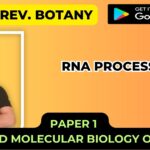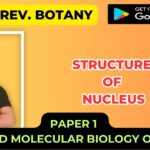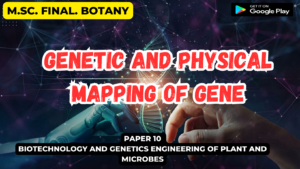![]()
GRWOTH AND DIVISION OF CHLOROPLASTS OR PROPLASTIDE
The microscopic evidence suggests that chloroplasts usually arise by growth and division of existing chloroplasts. In algae, which contain only one or two large chloroplasts per cell, the fate of individual chloroplasts is easy to watch light microscopists discovered that each chloroplast in cells of the green alga spirogyra divides in half prior to cell division. chloroplasts isolated from higher plant tissues have also been reported to divide when placed in an artificial growth medium. Not all plant cells contain chloroplasts

The various cell types found in higher plants all arise from a rapidly dividing, undifferentiated tissue called meristem. Meristem cells lack chloroplasts, but they have small organelles called proplastids that contain chloroplast DNA.
Proplastids measure 1 μm or less in diameter and consist of an’ undifferentiated stroma surrounded by a double-membrane envelope. Depending on where they occur in the plant and how much light they receive, proplastids develop into different kinds of plastids designed to serve different functions. Some proplastids differentiate into amyloplasts, which are starch-filled particles that predominate in starchy vegetables such as potatoes.
Other proplastids acquire red, orange or yellow pigments, forming chromoplasts that give flowers and fruits thyeir distinctive colours. Although proplastids can develop into a variety of organelles, their main fate in photosynthetic tissues is to evolve into chloroplasts. The conversion of proplastids into chloroplasts requires light, which triggers an enlargement of the proplastid and the formation of membrane tubules that project from the inner membrane into the stroma.

The tubules then spread into flat sheets that line up in parallel to form thylakoids. At the same time, chlorophyll and other components of the photosynthetic electron transfer chain are produced and incorporated into the thylakoids. If developing plant seedlings are allowed to grow in the dark, a different sequence of events takes place. The proplastids still enlarge and membrane sheets invaginate from the inner membrane, but these sheets condense into a set of interconnected membrane tubules known as a prolamellar body.
The membranes of a typical prolamellar body arc arranged as highly ordered hexagonal arrays of membrane tubules. At this stage the plastid is called an etioplast. l.ksides developing from proplastids in dark-grown seedlings, etioplasts also arise when green plants containing mature chloroplasts are transferred from light to darkness.
Under such conditions, the thylakoid membranes break up into tubules that fuse together to produce a typical prolamellar body converting the chloroplast into an etioplast.
They act as chloroplast precursors that can develop into functional chloroplasts when ex- posed to light. Within a few hours after an etioplast is illuminated, the prolamellar body becomes transformed into an irregular mass of tubules; membrane sheets then grow out from the tubules and develop into thylakoid membranes.
This conversion of an etioplast into a chloroplast is accompanied by the formation of components of the photosynthetic electron transfer chain, such as chlorophyll. Etioplasts contain high concentrations of protochlorophyllide, which is a metabolic precursor of chlorophyll.
When etioplasts are illuminated, the absorption of light by protochlorophyllide triggers its rapid conversion to chlorophyll.













